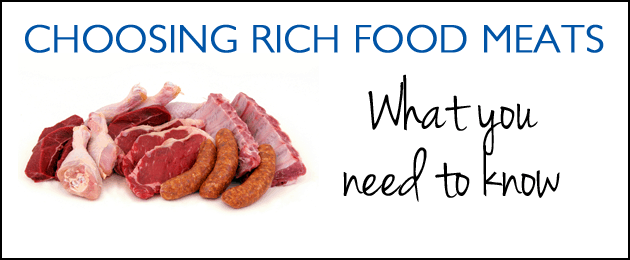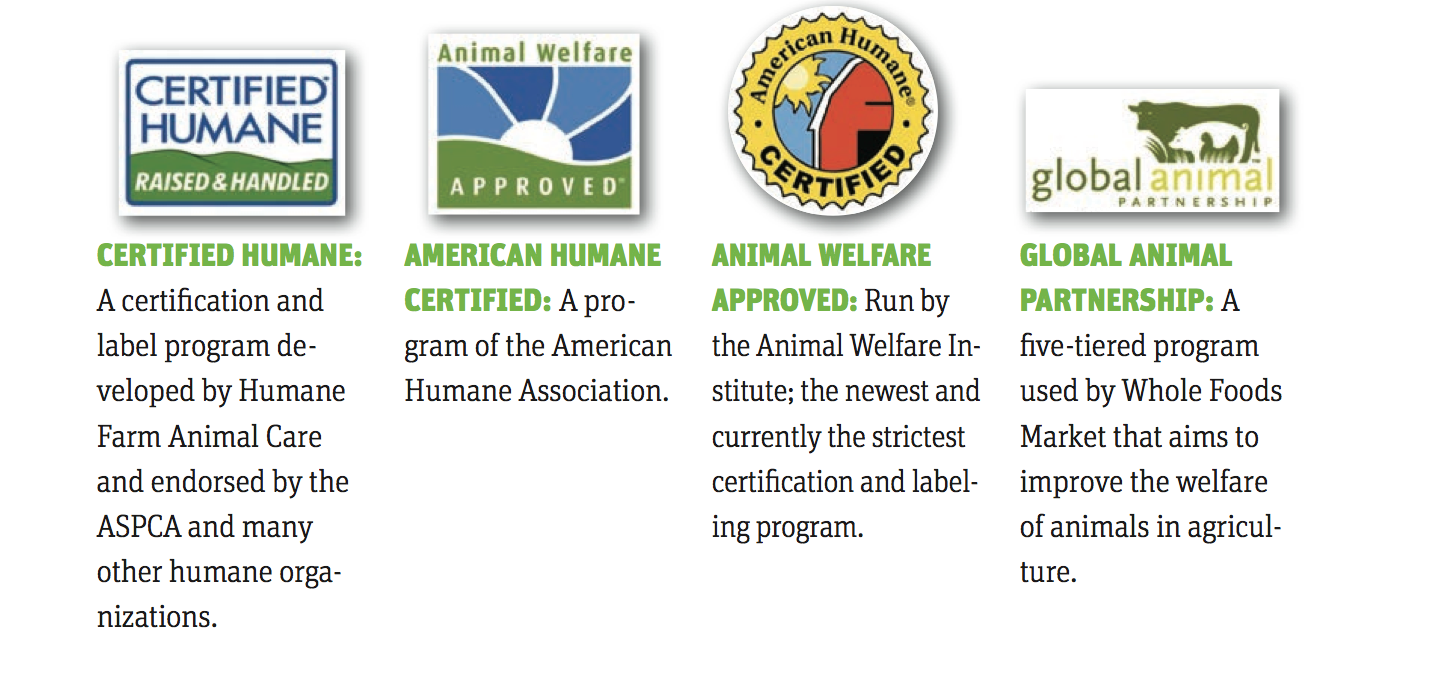We long for the days of the mom-and-pop butcher shops with sawdust on the floor and chops hanging in the backdrop. While they might not be popular these days, the butchers in your grocer's meat department are highly knowledgeable and ready to help you on your quest towards Rich Food meat choices. If you don't already know your butcher's name, we suggest you get to know them. They can lead you to the best cuts of meat. However, they may not be able to help you choose the healthiest, most micronutrient-rich source of meat – that's what we are here for!
Whether you are looking for a heavily marbled rib-eye or a fat-trimmed chicken breast, the manner in which an animal is raised makes a big difference in its overall ability to deliver a delicious, healthy meal. The great news for all you animal lovers out there is that the happier and more humanely treated animals are, the healthier and more micronutrient-rich they are. So take a stand and choose meat from animals that were treated humanely. Gratefully, there are some terrific organizations acting as watchdogs, making sure animals are treated well.
Look for these logos to identify the good guys looking out for our health, as well as the health of the livestock:
Although cows, bison, sheep, deer and goat all appear to be quite different, they all have one thing in common, they are all ruminants, which means they eat plant-based diets and digest the through rumination – chewing, regurgitation, and rechewing cud to stimulate digestion. Their natural, grass fed diets have traditionally supplied them with all the nutrients they need to produce micronutrient-rich steak and chops. Unfortunately, today's conventional farms (aka CAFOs – Concentrated Animal Feeding Operations) want to hurry the process along, so rather than allow these animals time to graze on grasses as they freely roam, animals are locked in confined spaces and fed diets full of GMO grain. While the feed, filled with antibiotics and growth hormones, increases their size rapidly, it also causes the animals to endure many health problems. Unfortunately, if it's not labeled otherwise, you can bet your meat comes from undesirable CAFO production. So, if you are like us and want to avoid these factory-farmed meats, what should you look for? The following are a few terms to help you analyze the Angus.
Grass-Fed
To be labeled grass-fed the USDA requires that the animals were raised on a lifetime diet of 100 percent grass and forage (with the exception of milk consumed prior to weaning). Unlike the term organic, however, it does not exclude the use of antibiotics, hormones, or pesticides or disallow the use of GMO grasses – which can include corn, soybean, rice, wheat, and oats in their pre-grain vegetative state. Still, these grass-feeders supply us with more micronutrient-rich meats, containing higher levels of healthy fats like CLA and omega-3 and lower amounts of omega-6 and saturated fat than grain-fed cows.
Don't be fooled by companies that state their cows are pastured. These cows may have been in a pasture at some point, but more than likely, they were also fed grains if the words grass-fed do not appear prominently on the label.
Grass-Finished
The manner that cattle are fed in the last few weeks or months before processing determines how an animal is “finished”. Grass-fed meat should be finished on grass, however, some farm grain finish to improve taste and texture as well as hasten the maturation and harvesting process. During the time of grass finishing, the levels of important nutrients like cancer-fighting, fat-metabolizing CLA and inflammation-reducing omega-3 increase dramatically in the beef. That is why it's so important to make sure that the beef you eat is not only grass-fed, but grass-finished. The term 100 percent grass-fed is often used to distinguish between a naturally raised animal and one that endured a grain-fed approach to the finish line.
Organic
Purchasing organic beef guarantees that your meat is free of antibiotics, hormones and GMOs. These animals must also have tie to pasture, but it is minimal (120 days) and the vast majority of what they eat (up to 70 percent) is permitted to come from non-GMO grains that are difficult for the animals to process. While you are minimizing your toxic-load, you are not guaranteed the greater micronutrient levels of grazing ruminants. Choose a labeled grass-fed organic eat to be sure you are buying only the best.












